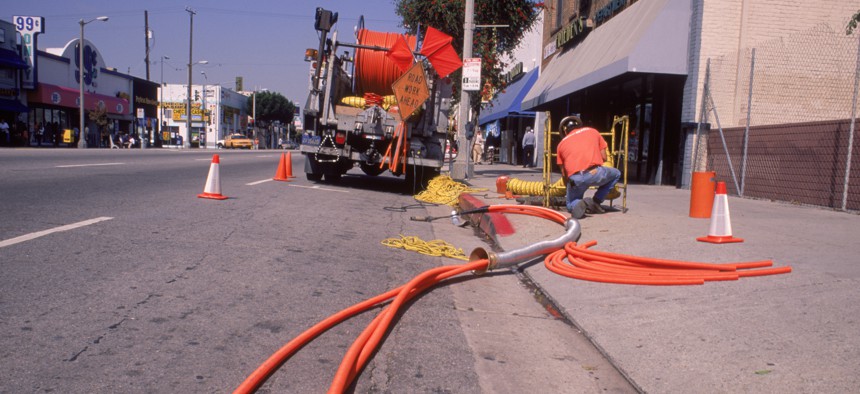Construction Underway on 10,000-mile Open Access Broadband Network in California

Mark Gibson/Getty Images
The “middle mile” network is expected to cost $3.8 billion and help connect the roughly one in five state residents who do not have access to reliable and affordable high-speed internet.
Construction is now underway on a 10,000-mile open access broadband network designed to bring high-speed internet to all California residents.
Gov. Gavin Newsom and members of his administration sent 500 feet of fiber optic cable through an underground conduit in rural San Diego County to mark the beginning of construction on the state’s “middle mile” network. Buildout of the full network, which will be the nation’s largest, is expected to cost $3.8 billion and must be completed by 2026.
Once the middle mile network is built, the state will fund “last mile” connections to hook up the middle mile network to homes and businesses. Local providers will be able to access the middle mile network to provide that direct service, as well as reduced-cost or free service for eligible residents.
The network is partly funded by Senate Bill 156, which Newsom signed last year to expand California’s fiber infrastructure and boost connectivity. The project also received $550 million in the state’s 2022 budget. In a statement, former Los Angeles Mayor Antonio Villaraigosa, who was named state infrastructure advisor earlier this year, called the effort “one of the most ambitious and impactful infrastructure projects in California.”
The construction project for the middle mile network has required coordination between several state agencies, including the Department of Transportation. DOT Director Tony Tavares said the agency’s 12 districts will work to build segments of the middle mile network on an “ambitious timeline” to capture available federal funding.
He said in a statement that the project also “provides a wonderful opportunity for us to ‘dig smart’ and highlights the benefits of coordination among state agencies and with our local partners.” Leaders in Congress and in various states have looked to push dig-once policies that attempt to reduce the amount of construction along the same rights-of-way.
California Secretary of Government Operations Amy Tong said the digital divide that exists in the state forces many residents to rely on other methods to connect to the internet, and that must change.
“Too many rural and urban areas lack adequate broadband infrastructure, forcing residents to attempt to connect via mobile hotspots and unreliable satellite service, which leaves out too many Californians,” Tong said in a statement.






